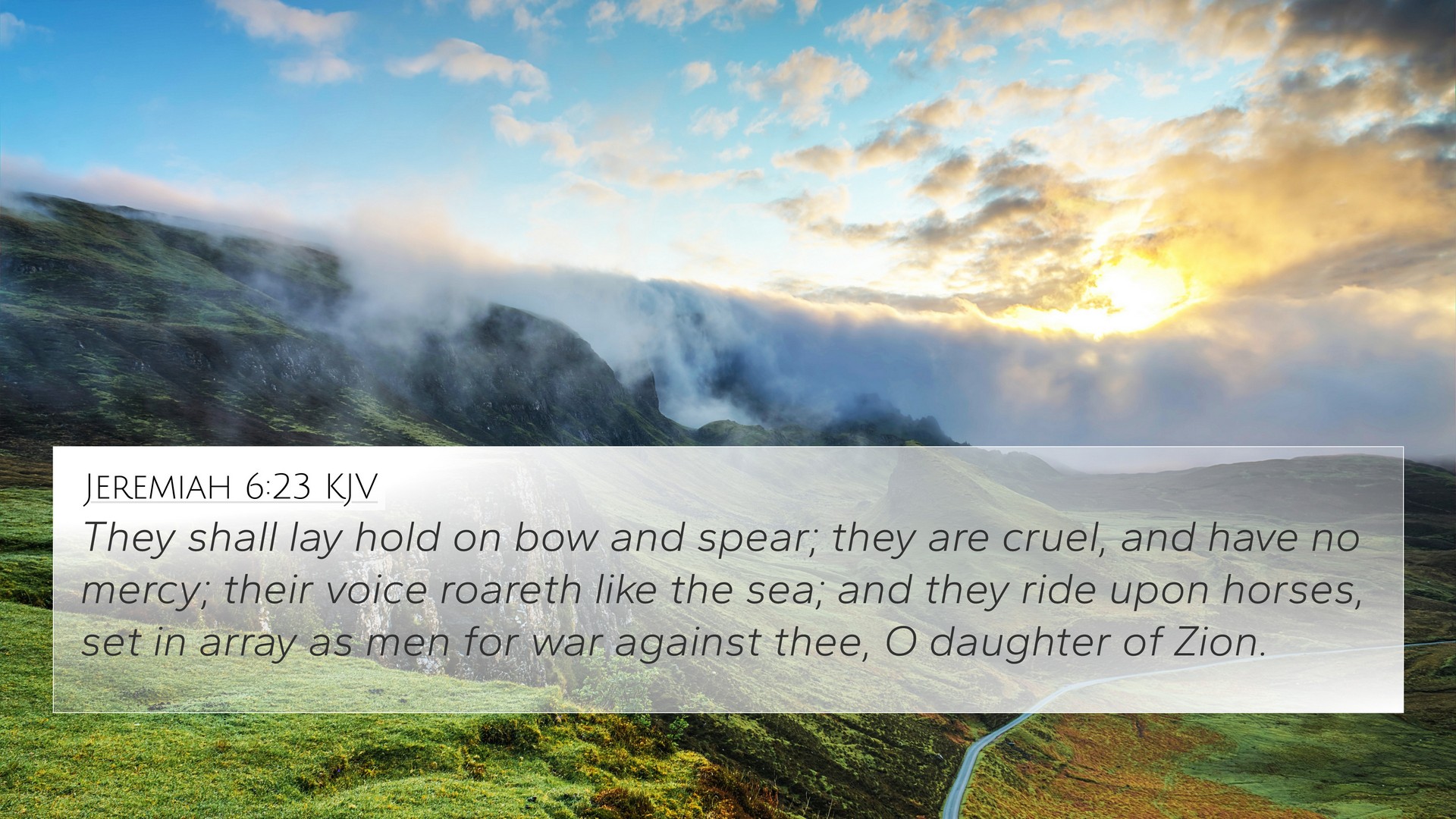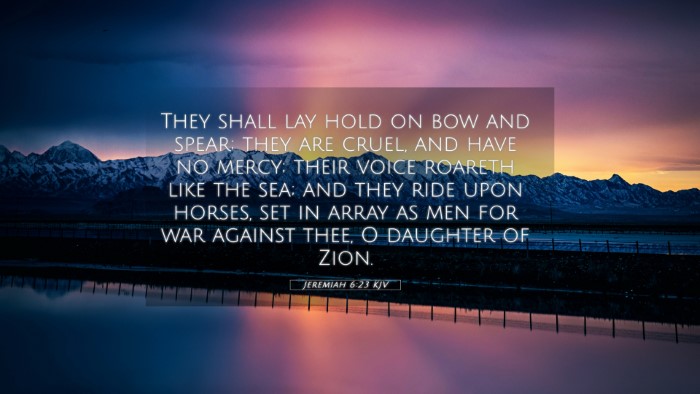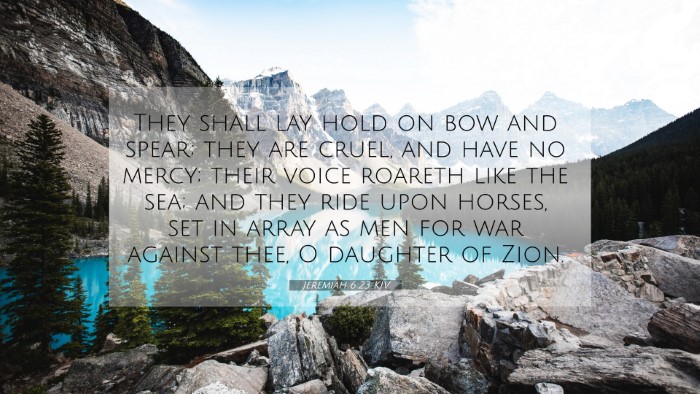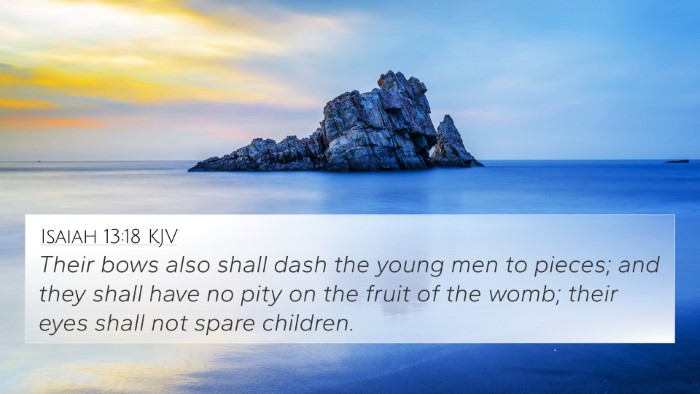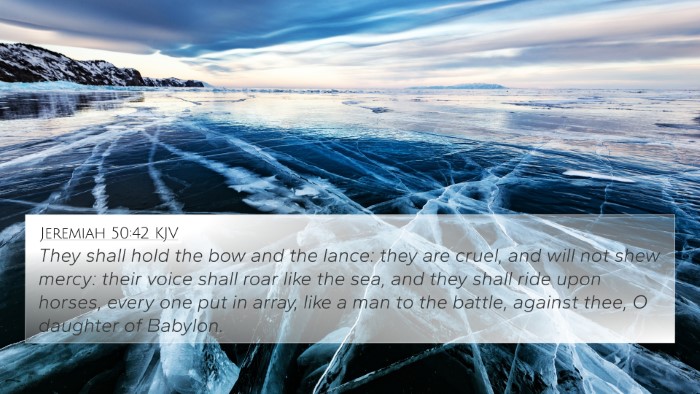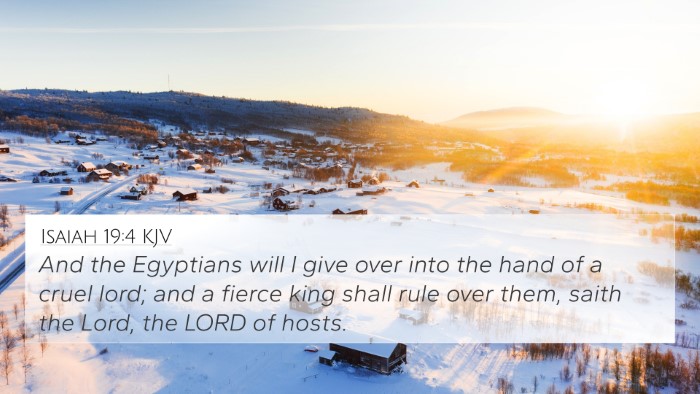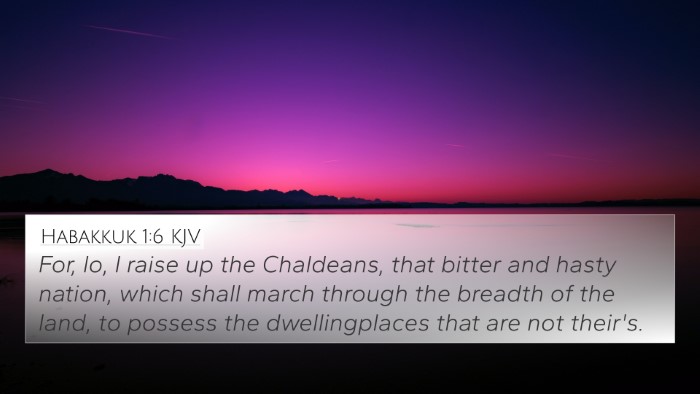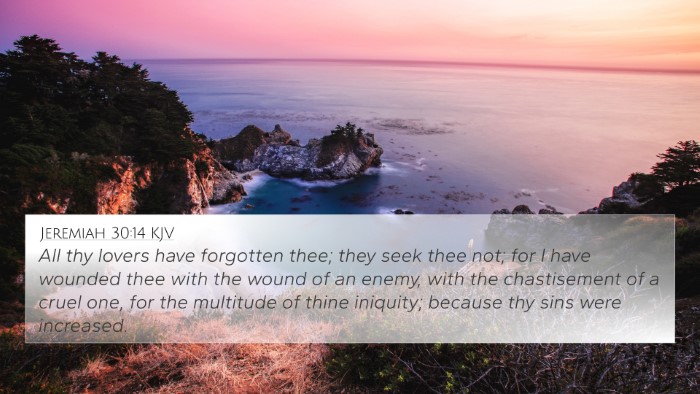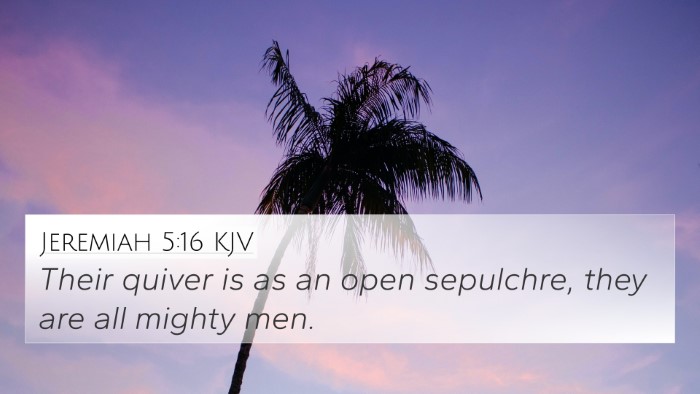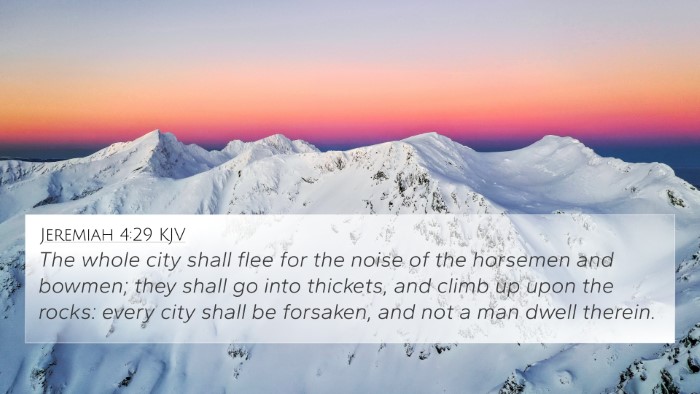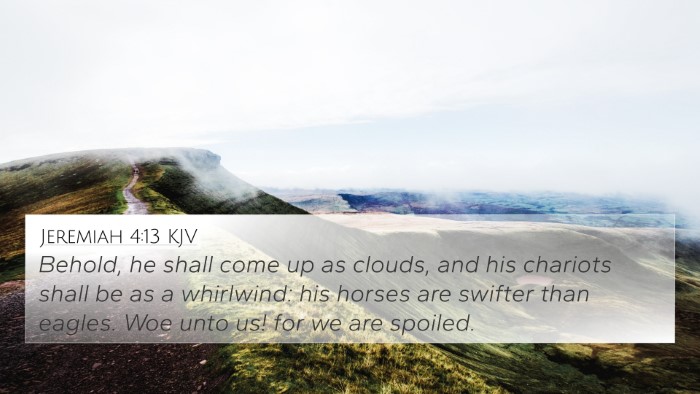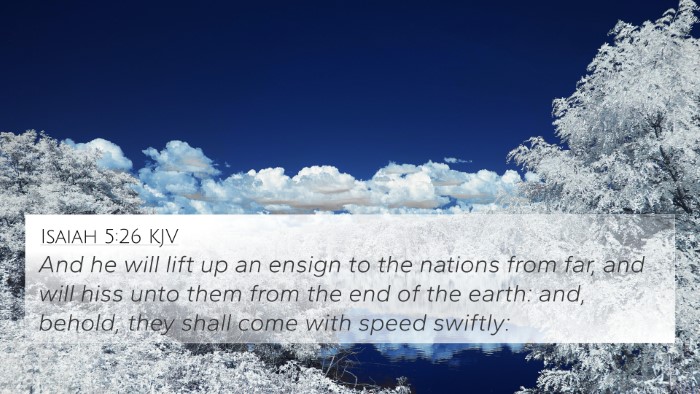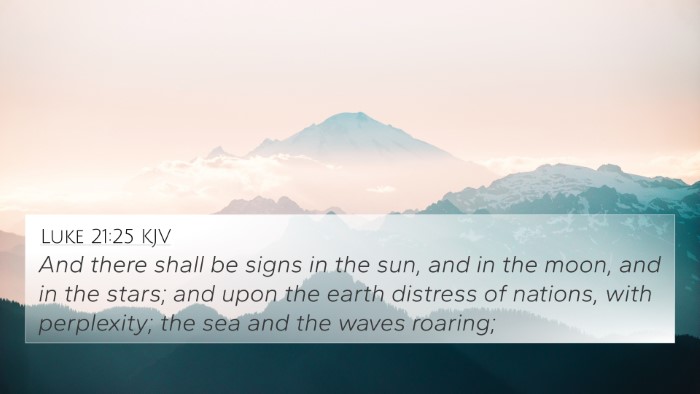Understanding Jeremiah 6:23
Jeremiah 6:23 states: "They handle the bow and the lance; they are cruel and have no mercy; their voice roars like the sea, and they ride upon horses, set in array as men for war, against thee, O daughter of Zion." This verse presents a vivid imagery of Judah under siege, reflecting the dire state of the people and the formidable enemy approaching them.
Summary of Interpretations
The following insights are drawn from various public domain commentaries including those by Matthew Henry, Albert Barnes, and Adam Clarke.
Matthew Henry's Commentary
Henry emphasizes the cruelty of the enemy, likening their advance to a mighty storm. The soldiers' violent demeanor demonstrates not just their physical strength but their psychological impact on the people of Zion. This calls for introspection on the part of the reader, highlighting the importance of spiritual preparedness in the face of adversity.
Albert Barnes' Notes
Barnes expounds on the metaphor of "roaring like the sea," which illustrates the tumultuous nature of warfare invading even the hearts and minds of the people. He connects this verse with a sense of impending doom, exhorting the audience to acknowledge the seriousness of their plight and the need for repentance before God.
Adam Clarke's Commentary
Clarke discusses the chaotic imagery portrayed in this verse, noting that it signifies the totality of the enemy's unyielding aggression. His analysis stresses the importance of understanding the context of this verse — a warning to Israel and a reflection upon their continual straying from God’s paths. Clarke also suggests that it serves as a prophetic announcement regarding future trials.
Key Themes and Connections
This verse illustrates crucial themes such as:
- The Reality of Warfare: The depiction of a looming threat emphasizes the physical and spiritual battles faced by God’s people.
- Judgment and Repentance: The fierceness of the approaching army symbolizes divine judgment, suggesting a call for repentance.
- God’s Protection: While the enemy is fierce, underlying this narrative is the assurance of God’s sovereignty and protection for those who turn back to Him.
Bible Cross-References
This verse resonates with various others across Scripture that share similar themes. Key cross-references include:
- Psalm 46:1-3: "God is our refuge and strength, a very present help in trouble..." highlighting God's protection amidst turmoil.
- Isaiah 59:19: "When the enemy shall come in like a flood, the Spirit of the Lord shall lift up a standard against him." This connects to the inevitability of conflict but underscores divine intervention.
- Micah 4:10: "Be in pain, and labour to bring forth, O daughter of Zion, like a woman in travail..." resonates with the suffering of the people.
- Lamentations 3:37-39: The questioning of a man’s suffering and God's purpose therein aligns with the struggles faced by those in Jeremiah's day.
- Daniel 7:7: "After this I saw in the night visions, and behold, a fourth beast, dreadful and terrible..." reflecting on the nature of violent forces at work.
- Ephesians 6:12: "For we wrestle not against flesh and blood..." stressing the spiritual warfare underlying physical conflicts.
- Revelation 12:7-9: The battle in heaven symbolizes the cosmic struggle, reflecting humanity’s constant state of conflict toward righteousness.
Exploring Thematic Connections
The themes in Jeremiah 6:23 intertwine with several significant Biblical narratives:
- Spiritual Preparedness: Similar to the exhortations found in 1 Peter 5:8, where Christians are urged to be vigilant over their spiritual state, this verse warns of impending danger.
- Divine Justice: Just as seen in Romans 2:6, where God’s judgement aligns with His righteousness, Jeremiah’s message seeks to awaken Israel to their spiritual state.
Conclusion
In summary, Jeremiah 6:23 serves not only as a historical account but also as a spiritual admonition to readers today. The connections to other scripture reveal a unified theme of struggle, divine sovereignty, and redemptive suffering woven throughout the texts. As believers study this verse alongside its cross-references, they gain deeper insight into the character of God, the nature of evil, and the importance of a posture of repentance and trust.
This understanding fosters a richer Bible study experience, encouraging use of tools like a Bible concordance for cross-referencing, enabling readers to identify connections between Old and New Testament scriptures effectively.
